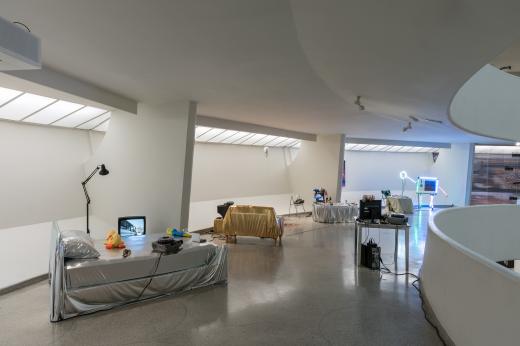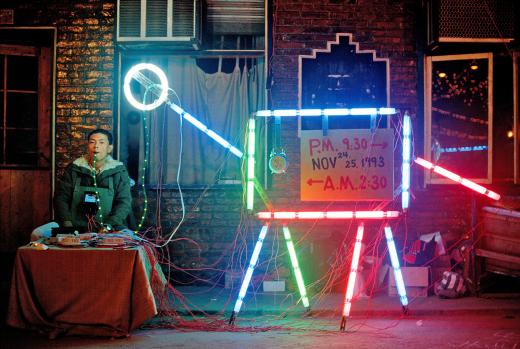5 HOURS: CAPITALISM, URBANISM, REALISM
GALLERY 205
The spring of 1992—when Communist Party statesman Deng Xiaoping made his “Southern Tour” to promote a new chapter of economic liberalization—may have been an even more significant turning point for China than 1989. From that moment, the path forward turned away from socialist command and toward free-market capitalism and neoliberalism. Earlier dreams of democratic transition would succumb to a new kind of authoritarianism. Urbanization and globalization would occur at an unprecedented scale and speed.
The key artistic impulse that accompanied this transition was the resurgence of “realism.” The first stirrings occurred in Beijing, as a group of figurative painters at the Central Academy of Fine Arts began to use the techniques of Socialist Realism to reveal the drab experiences of individuals in the throes of enormous social change. Like their contemporaries in the former Soviet Union and Eastern Bloc, these artists turned their academic training to the hapless, disaffected lives of those at the fringes of a new society.
The speed and scale of the Pearl River Delta’s urban transformation was the most exaggerated. Its cacophony attracted Dutch architect and thinker Rem Koolhaas, who wrote in his groundbreaking research on this region, “A maelstrom of modernization is destroying everywhere the existing conditions and everywhere creating a completely new urban substance.” This urbanism, which Koolhaas saw as doubly characterized by a lack of “plausible, universal doctrines” and an “unprecedented intensity of production,” proved compelling to Guangzhou’s Big Tail Elephant Working Group, who used art to engage with and intervene in the rapidly changing environment.
For artists working in cities throughout China, an urgent new reality became at once the inspiration and the medium for a new kind of social art, which used the raw conditions of daily life to comment on the velocity of economic transformation.


